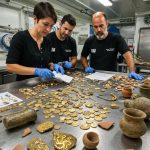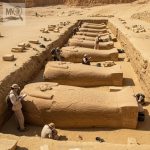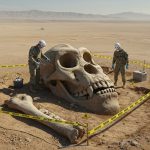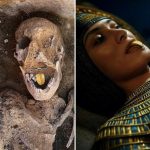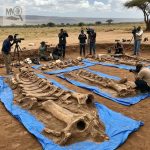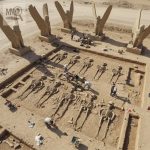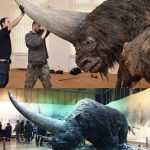🦖 “The Giant That Shouldn’t Exist”
- Thuong
- October 18, 2025
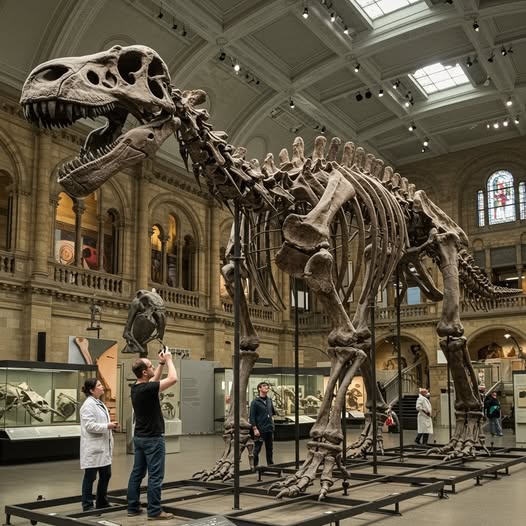
🦖 “The Giant That Shouldn’t Exist”
Inside one of the world’s most prestigious natural history museums stands a towering skeleton that has captured the imagination of millions. Its sheer size is breathtaking — ribs arching like cathedral beams, vertebrae the size of boulders, and a skull so massive that visitors instinctively lower their voices in its presence. To the public, it’s labeled as an undiscovered species of prehistoric giant reptile, a new branch on the dinosaur family tree. But behind the closed doors of academia, whispers grow louder each day: something about this specimen doesn’t add up.
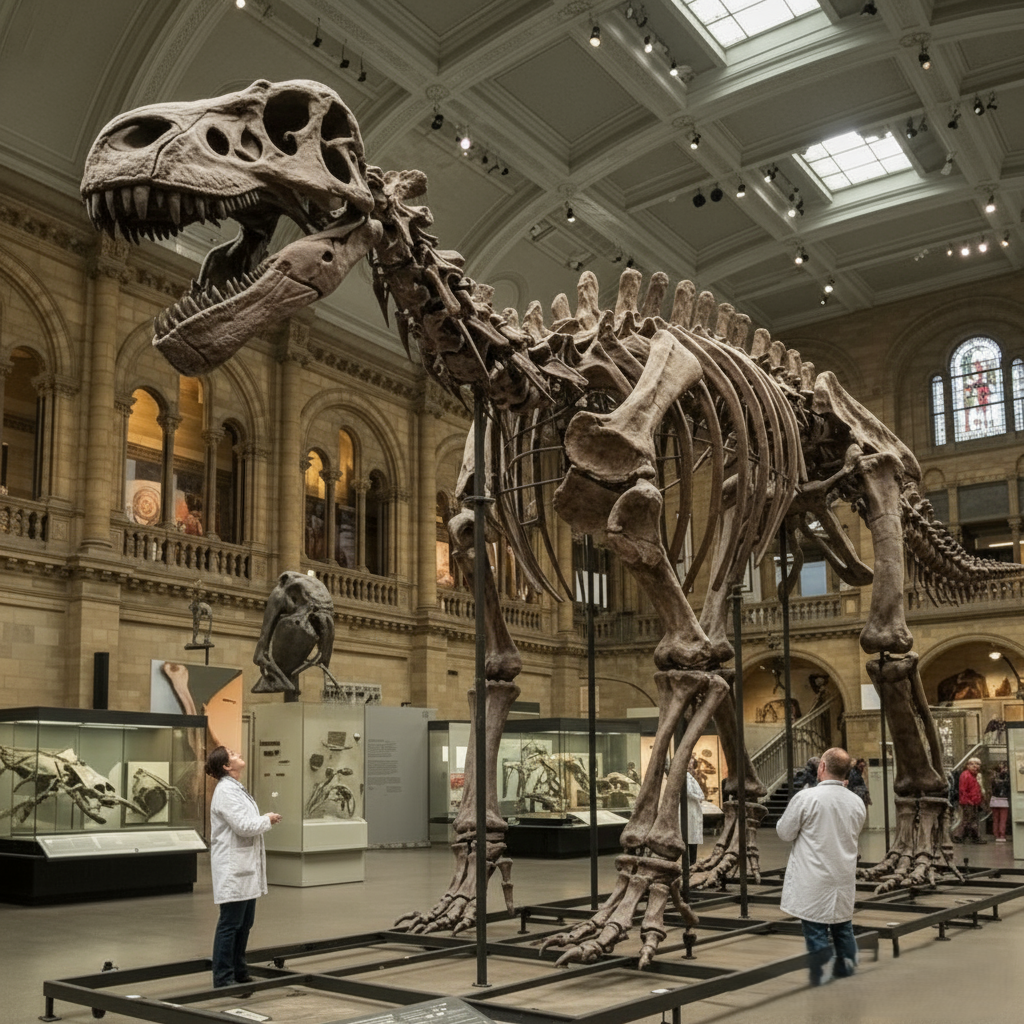
According to several sources close to the excavation team, the fossil’s bone density and mineral composition don’t align with any known prehistoric creature. Its structure — upright, symmetrical, and almost humanoid in form — has baffled even senior paleontologists. One insider reportedly described the find as “a biological paradox,” claiming that the skeletal proportions suggested intelligence, bipedal balance, and an internal bone architecture closer to that of early humans than reptiles.
Adding to the confusion, preliminary carbon analyses (which were never officially published) allegedly dated portions of the surrounding soil to less than 20,000 years old — far too recent for a dinosaur classification. That revelation, if verified, would overturn everything we know about Earth’s evolutionary timeline. Yet, the museum has remained eerily silent. No independent labs have been granted access to the specimen, and photos from the original dig site have mysteriously vanished from archives.
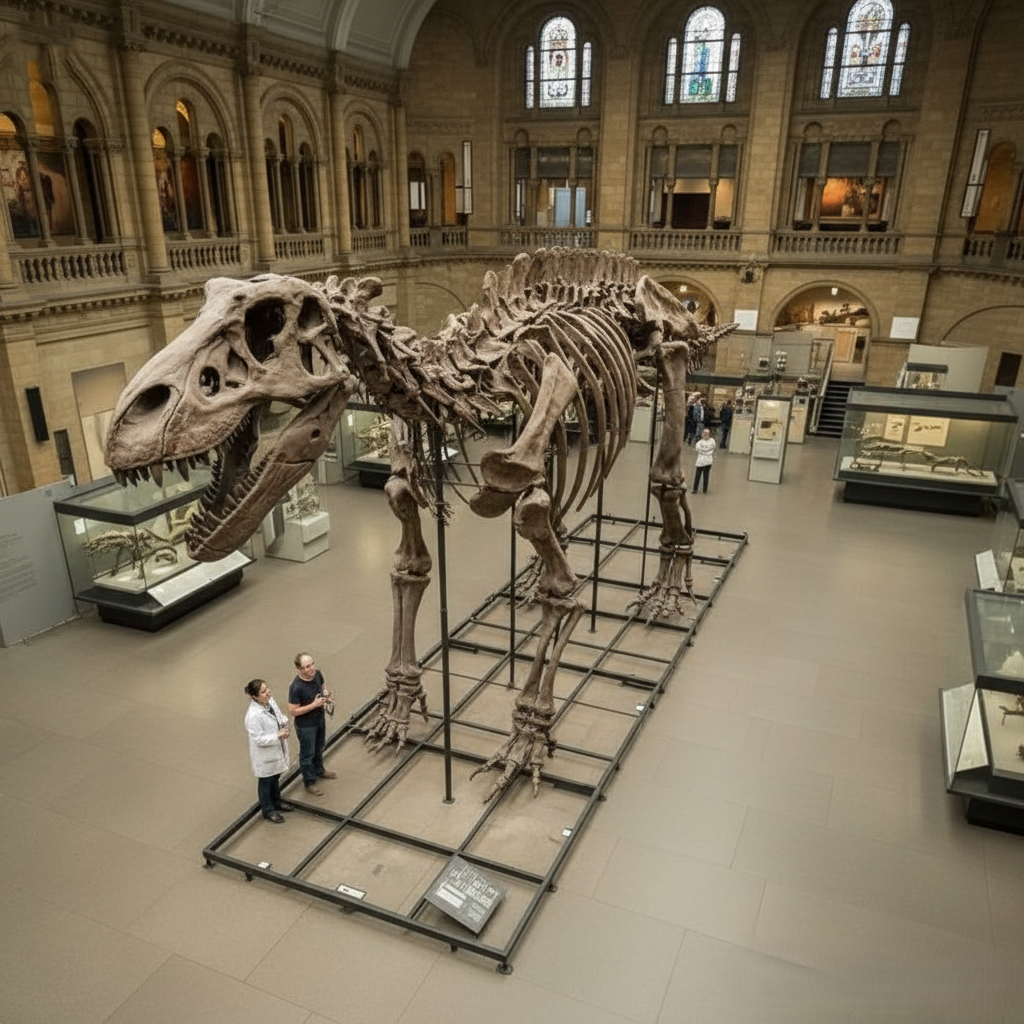
The excavation site itself — said to be located in a remote desert region under government supervision — was reportedly sealed off shortly after the discovery. Workers who participated in the dig have signed strict confidentiality agreements, while the research team that first unveiled the fossil was quietly reassigned. “It’s like it never happened,” one source told an independent journalist. “They put it behind glass and gave it a name that fits their comfort zone. But deep down, they know it’s something else.”
The scientific community remains divided. Some argue the skeleton could be a composite — bones from different species mistakenly (or intentionally) assembled to form a more sensational display. Others suggest it may belong to a species that survived long after the supposed extinction of the dinosaurs. But a growing faction believes the truth is even stranger: that this may not be a dinosaur at all, but the remains of an unknown ancient being, possibly from a forgotten civilization erased from our history books.
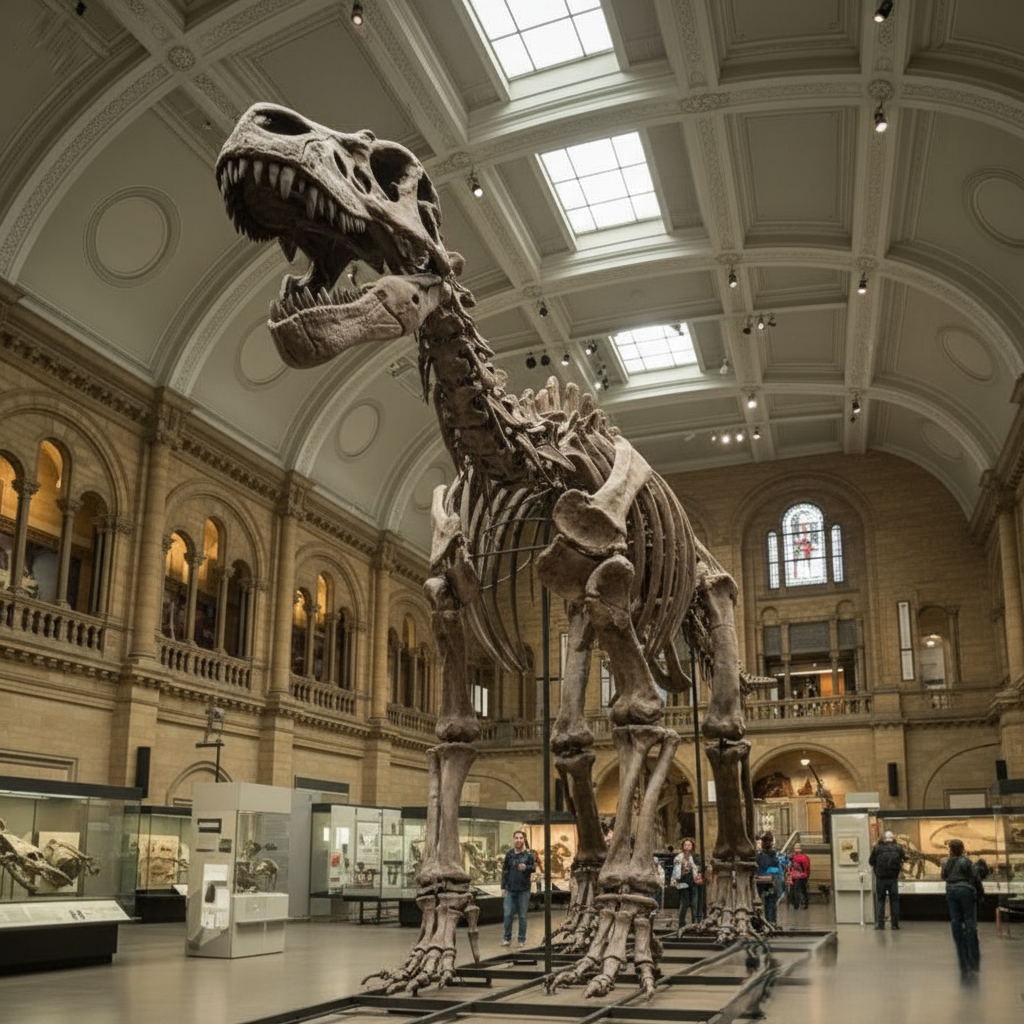
The institution hosting the fossil has declined multiple requests for interviews. Their official statement refers only to “ongoing research and verification,” yet no new findings have been published in scientific journals. The secrecy only fuels the fire. Online communities and independent researchers have begun calling the specimen “The Giant That Shouldn’t Exist” — a phrase that now circulates across countless forums and social networks.
Whether this fossil is a misidentified creature, a forbidden discovery, or evidence of a rewritten history, one thing is certain: it stands as a silent challenge to the narratives we’ve long accepted. Beneath the sterile lights of the museum, surrounded by whispers and unanswered questions, the giant remains — frozen in time, daring humanity to confront the possibility that our history may not be what we think it is.
#MysteryFossil #HistoryUncovere





